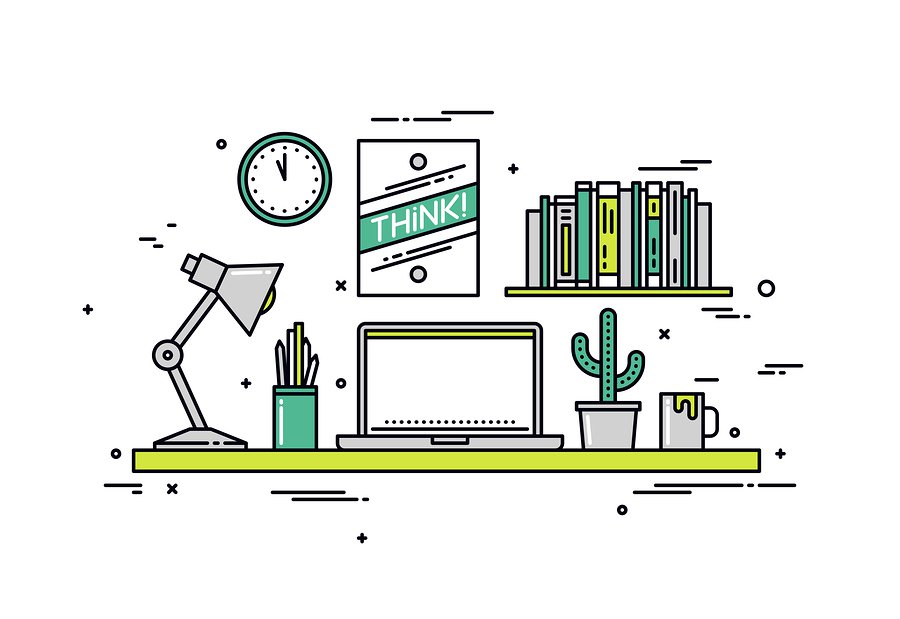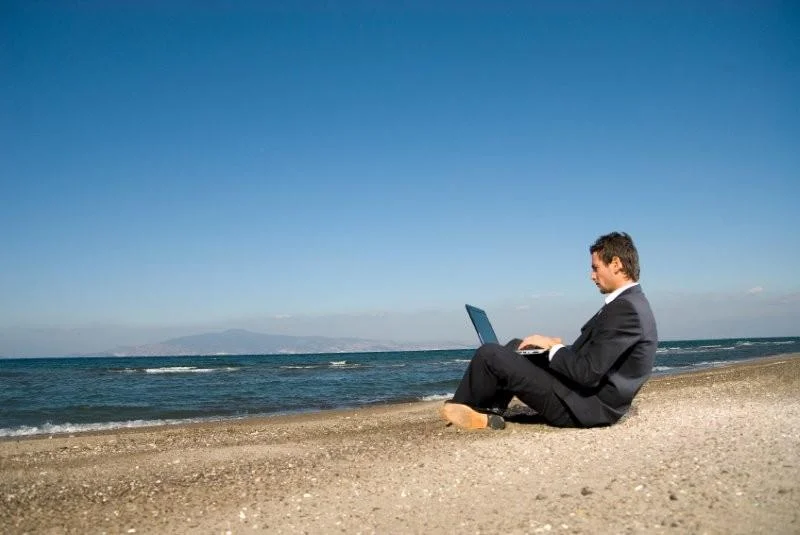A new report from enterprise software firm Samanage, claims that US businesses are wasting up to $1.8 trillion annually on repetitive and mundane tasks that could easily be automated, leaving people free to carry out more productive and creative work. The Samanage State of Workplace Survey, polled around 3,000 US working adults and claims that workers spend an average of 520 hours a year – more than one full day’s work each week – on repetitive services and tasks that could be easily automated, such as, password reset requests, contract reviews and approvals, office supply requests and performing other simple administrative tasks. In addition to lost time and money, the survey also claims employees are skirting organisational IT policy. Outdated technology is holding employees in the modern workforce back from driving process efficiency and identifying ways to make their work life better.
Video: What the 21st Century office looked like in the 1960s
We’re used to hearing people predict what The Office of the Future will look like. It’s been going on for a very long time now and each new generation of commentators on the subject comes up with its own forms of wishful thinking, wild generalisations, distorted conclusions and failures to account for the inherent unknowability of future disruptive technology. The best way of reminding ourselves of these pitfalls is not to look forward, but back. In this broadcast from 1967 (above), legendary US newsman Walter Cronkite reports on how people saw the future of work and technology. While some of it was prescient, some of it was inevitably wide of the mark, not least by actually underplaying the impact of technology. Cronkite was not alone in envisioning the future of work, of course.
Seven ways in which flexible working is making our lives more rigid
One of the main reasons why books such as Catch 22 and 1984 make such mediocre films, is because celluloid struggles to capture the books’ preoccupation with the ways in which language can be used to subvert meaning and rationality. We don’t always have to lean on the bookcase to see how this works. It’s been evident recently in the coverage of the massive growth of zero hours working worldwide, although they have now been banned in New Zealand. There are now up to 1.5 million people on zero hours contracts in the UK and the adjective most commonly associated with the practice in the media coverage has been ‘flexible’, despite the fact that from the perspective of the majority of the people working on such contracts they are anything but. It’s yet another example of the subversion in our use of the term flexible working. It’s Doublespeak; an expression which means something completely different to, or indeed the opposite of, the thing it is describing.
4 Design Elements Flexible Workspaces Should Have
As work styles have changed, workspace design has also changed; and it goes beyond ditching the cubicle and adopting ping-pong tables. Truth is that even though there’s a more casual approach to work and doing business, professionals remain as concerned about getting their work done as ever…they’re simply not so concerned about where and when they get it done. With habits of work different than years ago and with new technology in the picture, workspaces have had to adapt their design to fit the users’ needs. Below, you’ll find 4 design elements that we believe flexible workspaces should have in order to be successful and keep a client base flowing.
What Makes a Workplace Healthy?
Evidence keeps piling up that healthy workplaces produce big benefits for employers. Studies show offices and other work areas designed to enhance worker health and wellness not only reduce employee absences and reported illnesses, but also improve productivity and help to attract and retain employees.
Unpredictability and office environment are key causes of workplace stress
The two most common factors influencing work related stress levels are unpredictability (26 percent) and workplace environment (21 percent) according to a poll by US jobs site CareerCast.com. The results, based on 834 respondents found that most of the respondents (62 percent) rated their jobs as highly stressful, while just 11 percent felt the amount of stress on the job was low. Other key stressors were deadlines (20 percent) and safety of others (16 percent). Interestingly, few people felt that length of work day/week (7 percent), personal well-being in danger (5 percent), potential for promotion (3 percent) and travel (1 percent) were major job stressors. Any number of factors can contribute to an unpredictable workplace; either the flow of responsibility changes from day-to-day with new tasks added or changed at random intervals or expectations may change. Running a close second is the workplace environment and culture, which includes interactions with bosses, co-workers and clients/customers.
WHERE TWO WORLDS COLLIDE…
Mark Barrell, Design Director at The Boss Design Group, talks to us about the crossover between the workplace and hospitality sectors. The Boss Design Group is a designer and manufacturer of office seating. Established in the UK in 1983, the company now operates multiple production facilities around the world and has supplied more than half of the UK’s FTSE 100 companies.
Beyond Beta: Virtual Reality Supports Empathetic Design
As workplace strategists, we study the people and culture of an organization from the insider’s point of view with ethnographic field visits. Observation periods, focus groups, interviews, activity logs, and surveys are a few methods we use to help understand ways a workplace supports or inhibits the worker and, often times, the company culture. We analyze the collected data—some of which is user-generated through hands-on exercises—and feed key insights into what is known as user-generated, or participatory, design. But this is nothing new. We have engaged in such activities for years to guide our clients to a newly designed workplace that better fits their people, culture, brand, and processes.
How Technology Has Changed Workplace
Recently, while discussing some tweaks to the layout of his own office, I was asked by an investment industry leader, “What’s changed in office designs?” As a leader of workplace design for Financial Service Firms at Gensler, it’s something I think about every day. It’s also a multi-layered issue that can be difficult to distill into boilerplate ready responses. Ironically, this straightforward, off-the-cuff question brought a sudden rush of focus to the complex and always evolving factors currently inciting changes in workplace design practices.
WHY RESTROOMS MATTER IN THE WORKPLACE
People are sensors, constantly dialed into their surrounding environment for clues about everything from the primal mandates of safety, to the psycho-social basics of “how I’m perceived” and “what people think of me”. This general — yet fundamental — insight into the self-perceptiveness of humans is one of the factors that has guided the transformation of the physical workplace.
Read the article on workdesign.com > [paywall]
Distracted in the office? Blame evolution
Primitive survival instincts mean we can’t easily switch off from our environment but clever workspace design can sharpen focus.
How Gen Z Will Affect the Workplace
In 2016, 3.6 million baby boomers will retire, one fourth of millennial workers will become managers, and Generation Z (those born in 1994-2010) will be entering the workforce. How will this change the workplace?
Virtual Office: an Actual Definition, and Putting a Stop to Shills
The flexible workplace industry, and its component offerings — like the virtual office — are often perceived by those in and around the industry to be misunderstood, overlooked or worse yet, completely unknown to those who might benefit from the industry’s services. In the past ten years, a new movement — coworking — within the flexible workspace industry has arisen and surpassed serviced offices and virtual offices in terms of popularity and buzz, and perhaps in other ways too.
The nine workplace trends every organisation must learn to address
The latest company to set out its vision of workplace trends is food services provider Sodexo. The company’s 2016 Workplace Trends Report suggests there are nine key areas that managers should address, each linked by the common theme of striking the right balance between the organisation’s commercial objectives and the needs of its stakeholders. The report is a detailed meta-analysis based on primary research, client feedback and research from academics, trade associations and FM providers. The report covers the most talked about themes in workplace design and management including wellness, work-life balance, diversity, green building and workforce engagement. The authors acknowledge the challenge firms face in striking the balance between these complex and conflicting demands and call for an ‘holistic’ approach to resolve them (which may suggest they have as much of an idea about the right answers as anybody else).
Academic Incubators: The New Student Union
The student union has always been a college campus’s shared environment. It’s where students gather and a sense of community is fostered. Student unions historically offered leisure activities like bowling, movie night or student government offices, but today’s students are looking for more. They want to unite for something meaningful – not just for themselves, but for the benefit of their communities. Universities are filling this void with innovation centers and academic incubators.
WHAT WE LEARNED IN SEATTLE ABOUT CHOICE IN THE WORKPLACE
Everyone recognizes that the way we work has changed, but we are now faced with a dilemma of choice and variety of workspace. Last week at Coterie Worklounge in Seattle, we sought to understand how to best balance and manage all of the choices available today.
Engagement in the workplace | Part one
Engagement is a complex issue in which culture, opportunity for meaningful work, advancement, mission and leadership all play a role. But design, too, can influence engagement.
Fewer than ten percent of business processes will rely on paper by 2018
A new report from Xerox suggests that the use of paper in business processes continues to fall away. The Digitisation at Work report claims that the move from paper to digital processes is nearly upon us although many of the 600 survey respondents admit they may not be ready for it. The report found concerns remain over paper-based processes, with cost (42 percent) and security (42 percent) cited as primary issues. Survey respondents predicted an average of nine percent of key business operation processes will run on paper in two years time. However, over half (55 percent) of the respondents admit their organisation’s processes are still largely or entirely paper-based and about a third (29 percent) are still communicating with customers via paper.This is despite the fact that 41 percent agree moving to digital workflows will cut organisational costs and 87 percent appear to have the skill sets available to make this happen.
“Tech” company workplace design trends
The rise of the disruptive upstart — the Ubers of the world — has ushered in a sort of second wave dotcom era. So said Adrian Berry, senior associate, Toronto interiors studio manager, B+H Architects, while co-presenting an IIDEX seminar titled Office of the Future: Trends in Tech Workplaces.
"Our Approach: Activity Based Working"
Interview with Domenic Meier, Haworth Schweiz AG. The modern office has changed significantly and will change even more in the future. There is less and less of a need for classic office furniture. Companies need to store significantly less furniture than just ten years ago. Today the majority of data is electronically archived, making the search for information so much more efficient, the employees are more mobile and the exchange of information is easier.
























